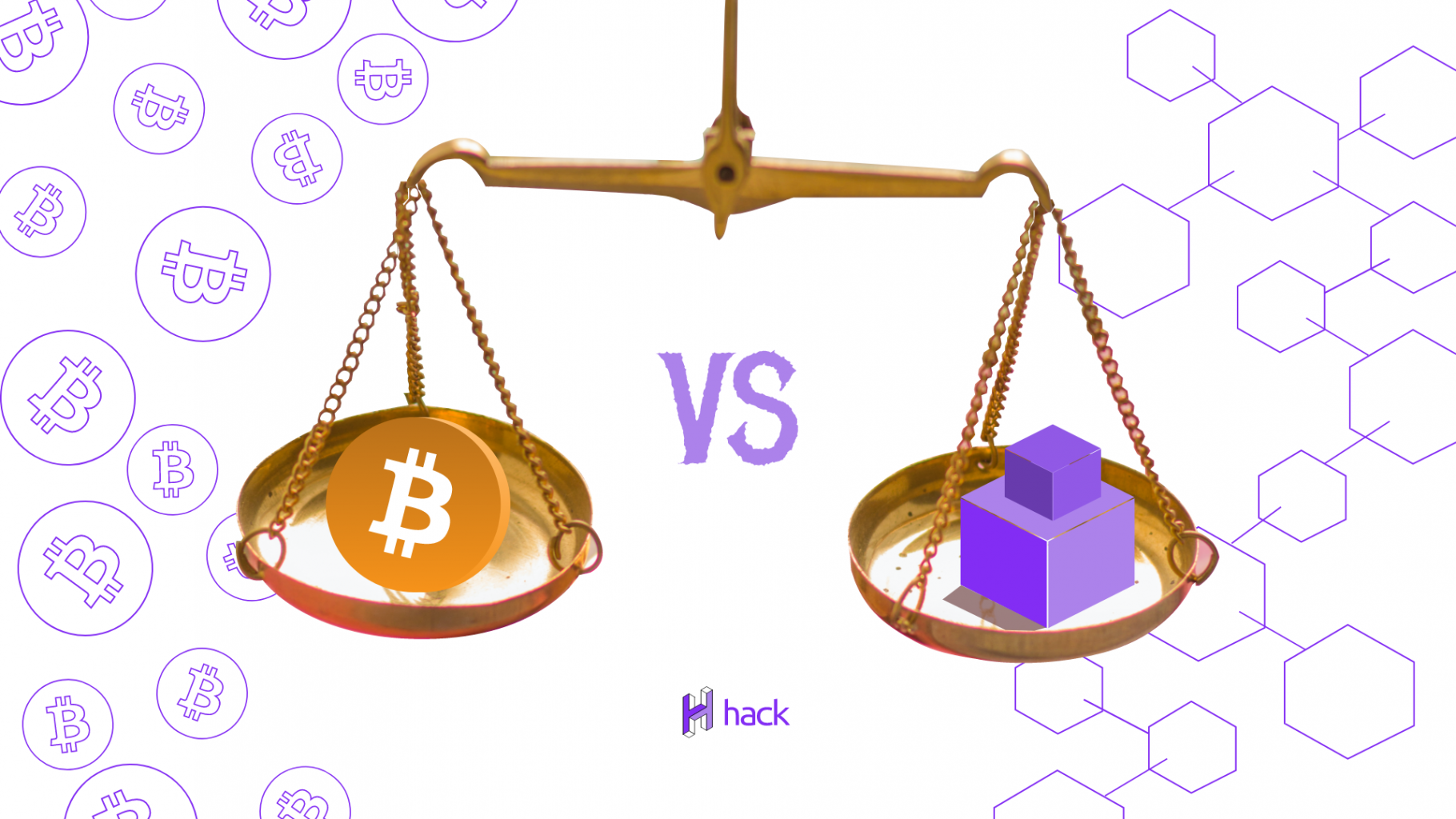A very very brief definition
Blockchain is the technology that enables the existence of cryptocurrency (among other things). Bitcoin is the name of the best-known cryptocurrency, the one for which blockchain technology was invented.
So, the question is:
What matters more: the technology or the creation, which this technology was invented for?
To answer this question first, and foremost, we have to compare the two on a general indicator.
To see what potentials and benefits Blockchain and Bitcoin have, we have to consider their impact on a specific, real-world environment. We choose the Financial System.
Bitcoin Potential
To explain Bitcoin we have to think of it as software. A software program that allows people to securely transfer money over the internet without a bank institution. It does this by replacing the function of a bank with a network of computers running the software that verifies and transfers the money. These computers, known as miners, maintain a global ledger of transactions that are used to validate, verify and transfer money.
Bitcoin’s most important potential is that it takes the global ledger of transactions out of the control of the banking system and distributes it onto every computer that is connected to the Bitcoin network. This means that the financial behemoths no longer control the system.
With Bitcoin, the users of the financial system are in control.
Bitcoin accomplishes this disruption not just by using blockchain technology but also with the global decentralized currency – bitcoin. The currency “bitcoin” is the motivation for anyone in the world to run the software that changes the way the financial system works. Banks cherish blockchain because they get to continue to maintain the ledger of transactions by running the software on their own computers. But bitcoin creates competition for the banks in the form of anyone with a computer and an internet connection.
Without the currency, there would be no incentive for people to spend money on computers and hardware needed to run the Bitcoin software.
Blockchain without Bitcoin mimics the same financial system already in existence.
Blockchain Potential
From a financial perspective, it’s easier to think of blockchain technology also as some kind of next-generation financial process improvement software.
Decentralized technology, such as blockchain, promises the ability to improve the financial processes that occur between parties, radically lowering the “cost of trust” and drastically increasing the efficiency and transparency factors.
Blockchain technology has the potential to provide a much faster, cheaper, and more efficient alternative to traditional cross-border payment methods. Indeed, while typical money remittance costs might be as high as 20% of the transfer amount, blockchain allows for costs just a fraction of that, as well as guaranteed and real-time transaction processing speeds.
Smart Contracts
Smart contracts are another highly powerful application of blockchain technology for the financial sector. Their potential applications are essentially limitless and can oversee all aspects of an agreement, from facilitation to execution. When conditions are met, smart contracts can be self-executing and self-enforcing allowing a more secure, more automated alternative to traditional contract law as well as providing an application that is faster and cheaper than the traditional methods.
Security
One of the most problematic areas of the digital age has been identity security. The financial sector is one of the many institutions maintaining online personal information and securing private information.
Blockchain is known to offer a tremendous level of security, thanks to the independent verification processes that take place throughout member computers on a blockchain network called “Consensus mechanisms“.
Yet, you may wonder how a consensus is achieved if these networks are composed of individual nodes operated by independent people or organizations, separated geographically and independent of each other or any central authority. How is it possible to reliably know which nodes are supplying faulty information about transactions — either maliciously or by accident?
Well, Byzantine Fault Tolerance (BFT) refers to the property of a distributed computer system that allows it to overcome this problem and consistently form consensus regardless of the fact that some nodes disagree with the rest, either accidentally or on purpose. This can be achieved by applying Proof-of-Work or (the most recent one) Proof-of-Stake algorithms which allow the decentralized system to ultimately determine the level of security, speed and scalability of the network.
This mechanism could just easily be applied to many types of verification procedures, including identity verification and many other applications regarding financial systems. To fulfil security requirements blockchain technology makes use of public-key cryptography to grant an ownership tool that is also referred to as the private key. The cryptography that secures blockchain is deemed to be powerful enough to give it the qualities of being tamper-proof and immutable.
It is important to point out that blockchain cannot exist outside a network of computers, which automatically eliminates most system risks that are mainly associated with centralized systems. The benefits of storing data across peer-to-peer networks guarantee security and immutability.
So what does it all mean?
Considering the potentials that Blockchain and Bitcoin bring to just one industry… it’s safe to say that one cannot live without the other. By combining them together in one synergy, we might witness the creation of a self–sustaining independent financial system that has never existed in the modern financial world before.
As such, it’s likely that financial experts and many others in the investing world will encounter blockchain technology much more in the years to come, whether it is linked with a specific cryptocurrency or if it’s being utilized in a number of other applications.
We can end this article with Twitter chief executive Jack Dorsey’s words “Blockchain and Bitcoin point to a future, and point to a world, where content exists forever, where it’s permanent, where it doesn’t go away and it exists forever on every single node that’s connected to it.”



